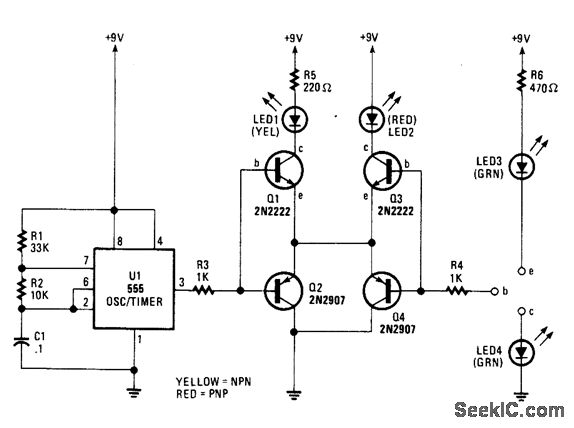

Similarly, a green-red-green glow means that the transistor is PNP type and the pin associated with the red LED is the base. The green LED glowing with a high intensity indicates the emitter side, while the low-intensity LED indicates the collector side. To identify the emitter and collector, simply press switch S1 and observe green LEDs adjacent to already glowing red LEDs.

A red-green-red glow means that it is NPN transistor and the pin associated with green LED is base. Simply plug the TUT in the possible combinations of three points. Normally, the transistors can be plugged in any orientation as they come in a variety of possible arrangements of the base, collector and emitter pins, such as CEB, BEC and CBE. Unregulated 15V-18V is regulated by the Zener-transistor combination to power the circuit. Use of transparent or semi-transparent LEDs is recommended.Īdjust preset VR1 (2-megaohm) to get an equal glow when any two test points are shorted. Thus under increased AC voltage, you can easily see that the emitter conducts more in the reverse direction (associated LED glows significantly) than the collector. From this observation, you can easily detect the base.Ĭollector and emitter are differentiated based on the principle that the base-emitter junction breaks down under reverse bias much more easily than the base-collector junction. Thus a red-green-red glow indicates an NPN type of the transistor, while a green-red-green glow indicates a PNP transistor. So, if the red LED connected to certain point glows, it means that n-type of the junction is connected to that test point, and vice versa. This makes the LEDs glow continuously for easy observation, revealing the direction of current flow between different test points.
Transistor tester pcb generator#
The counter is clocked by the AC generator built around gates N5 and N6. The LEDs are arranged to indicate the type of the semiconductor across the p-n junction.

In this manner, both junctions of the transistor can be tested. Each LED corresponds to a particular direction. A pair of LEDs is connected to each test point through which current flows in both the directions. Above is the circuit of the bipolar transistor tester.


 0 kommentar(er)
0 kommentar(er)
